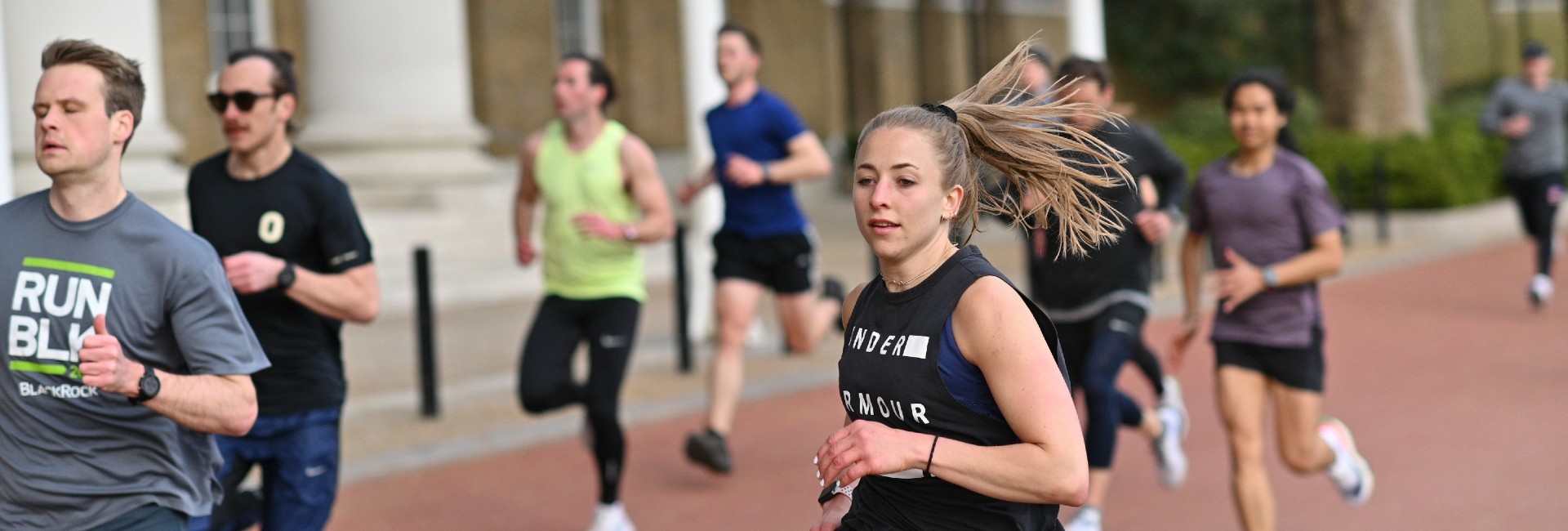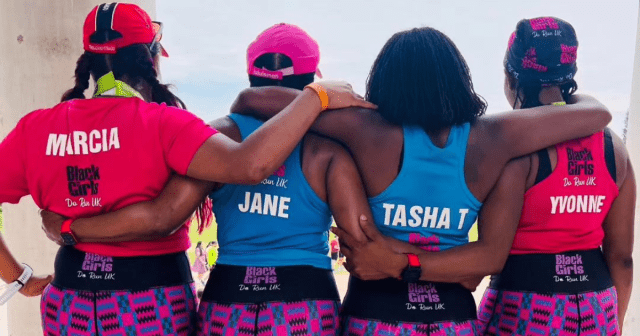When you begin running, it’s easy to think that you should be pushing yourself hard to get the most out of your new workout. But running too fast or too much won’t take you far, as you’ll probably end up injuring yourself and then losing motivation.
So, how can you avoid the common pitfalls that every new runner faces? We asked coach (and world-class endurance athlete) Calum Neff how you can start running without making all the classic mistakes – and how to turn your New Year running resolution into a habit.
How long have you been coaching new runners with Hardloop Endurance?

Adults have no foundation to build from when they start running, yet they often begin with the goal of going straight into a marathon without working on the essential aspects first, such as technique and form.
I launched Hardloop Endurance five years ago, but I’ve been working with new runners since I coached a youth program while a student-athlete at the University of Houston. I was working with about 100 children on track and cross country.
This experience was an interesting contrast to many first-time runners I work with now, who are predominantly in their 30s and 40s. Adults have no foundation to build from when they start running, yet they often begin with the goal of going straight into a marathon without working on the essential aspects first, such as technique and form.
How do you work with new runners to build this foundation?
As we get older, our range of motion becomes more limited, so it’s essential to work on technique.
I show new runners how to do drills, such as A-skips, B-skips, high-knees, and exaggerated running form, which all help reduce over-striding, improve your running efficiency, help keep the hips open and help prevent injuries.
Can a new runner ever be too enthusiastic?
You need to be patient with the process when you first start running.
From a motivational standpoint, no. However, doing too much (running too fast, too often, too soon,) can get a new runner into trouble.
You need to be patient with the process when you first start running. Building your aerobic engine takes time, but it is essential. Most new athletes I see have a 5k/10k time that far outperforms their marathon time. This comparison shows that long slow endurance work needs to be done in order to improve at the longer distances.
Why is running too fast an issue for new runners?

It’s important to have variation with your runs. Every week should include a range, from easy ones to recovery runs, plus the odd high-intensity session.
Every run shouldn’t be a workout. So, be mindful of your exertion level. If you can’t maintain your pace for a few hours, you are running too fast. (You don’t actually have to run a few hours, just a good check).
Aside from the fact that you don’t have the aerobic engine to support this level of effort, you also won’t recover properly from one session to the next. When we can’t reload our energy properly, our muscles burn glycogen (the sugar that our body changes carbohydrates into), but this will leave you feeling more depleted the next day.
Learning how to know when you’re running at an easy pace is vital for any new runner. How hard are you breathing? How long could you maintain this amount of effort?
Often new runners take up this sport to lose weight, and if this is your motivating goal, then it’s imperative to ensure you aren’t running too fast. Slower and lower intensity is better for burning fat as fuel over glycogen.
Either way, it’s important to have variation with your runs. Every week should include a range, from easy ones to recovery runs, plus the odd high-intensity session.
What are some common injuries that you see occurring in new runners?
Don’t run out the door at your fastest pace. You should build into it by being extremely slow on the first mile.
Shin splints happen a lot in new runners. It is mistakenly seen as an overuse injury, but as it happens when your body isn’t used to working out, it is actually an underuse injury.
Running uphill is a great workout option when you have shin splints, as it has a lot less impact on this part of the body.
One of the best ways for all runners to avoid injury is to keep their hips and glutes strong with supplementary exercises. All your lower body extends from here, so your lateral hip stability directly affects how you run.
These exercises are particularly important for older people who need to warm up and ease themselves into their runs by doing drill exercises, like leg extensions. Don’t run out the door at your fastest pace. You should build into it by being extremely slow on the first mile.
What should a new runner do if they injure themselves?
When I am injured, I don’t stop working out but rather switch my focus. If you have a running injury, opt for something different while you recover, like cycling, swimming, or CrossFit.
New runners mustn’t enable an injury cycle by overdoing it (running too fast, too much, too soon) and then stopping entirely for two weeks. It’s important not to go from 100 to zero.
Likewise, don’t try and run through an injury. If you try and push through, something will inevitably break, forcing you to stop. It’s essential to listen to your body. Ask yourself if what you are doing today will enable you to run tomorrow. If not, then you need to pull back.
When I am injured, I don’t stop working out but rather switch my focus. If you have a running injury, opt for something different while you recover, like cycling, swimming, or CrossFit.
What’s a good way for new runners to learn to pace themselves?
It’s easy to spot a new runner as they will have wild variation with their pace.
It’s easy to spot a new runner as they will have wild variation with their pace. Your fitness isn’t just about how fast you can run but how steadily you can keep your pace during different splits.
A good pacing workout is running for 10 minutes, then turning around and running back to the same place in precisely the same amount of time. This will help you understand how to maintain a consistent pace.
Your Polar sports watch is also helpful for learning how to maintain a leisurely pace. Watch how your heart rate changes as you run and try to maintain it.
What do you think it takes to turn running into a habit?
We all manage busy lives, and everyone is different when finding motivation. Some people need it to come from an external source, while others need to structure it for themselves.
So, for some people, getting a coach or joining a running club helps motivate them as other people expect them to show up. For others, they need to carve out personal time to commit. Putting it on your work calendar and not letting it change on your schedule is a great way to do this.
Do you have any other tips or recommendations for new runners?

Create a training plan full of variation, so each run you do in a week is slightly different. This will be good for you mentally and give your body a full range of motion.
Doing the same run not only gets stale and unstimulating for you but also produces less of a response from your body.
Create a training plan full of variation, so each run you do in a week is slightly different. This will be good for you mentally and give your body a full range of motion.
Easy runs, strides, accelerations, recovery runs – mix it up. Include a short hill run and a high-intensity session each week. Enjoy doing some sprinting. Keep it interesting.
If you liked this post, don’t forget to share so that others can find it, too.
Or give it a thumbs up!
I like this article
Please note that the information provided in the Polar Blog articles cannot replace individual advice from health professionals. Please consult your physician before starting a new fitness program.






